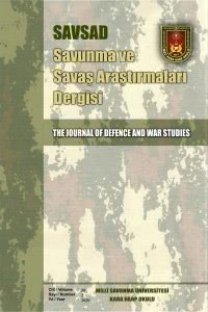EFL TEACHERS’ PERCEPTIONS ABOUT TEACHING GRAMMAR: A COMPARATIVE STUDY BETWEEN NOVICE AND EXPERIENCED TEACHERS
Teacher cognition
research has provided not only a deeper insight into the choices, decisions and
practices of language teachers, but also a more comprehensive insight into the
specific challenges teachers of English as a foreign language (EFL) face. In
this framework, studies on grammar teaching has made great contribution to our
understandings of how teachers teach grammar and of the cognitive framework
behind their instructional practices. Correspondingly, this study reports on
the EFL teachers’ beliefs about and their conceptualizations of grammar instruction
in teaching English and compares how novice and experienced teachers perceive
grammar instruction, examining whether there is a significant difference in
their perceptions. 70 Turkish EFL teachers who work at the Prep Class of state
university participated in the study. For the data collection purposes, a
five-point Likert scale questionnaire with 15 items was used. According to the
results, participant teachers indicated that they preferred direct grammar
teaching, where rules are presented explicitly prior to student production and
highlighted the necessity to learn grammar rules explicitly for effective use
of target language. In general, novice and experienced teachers showed no
significant difference. However, novice teachers had respectively stronger
tendency towards explicit and direct grammar teaching, especially in terms of
presentation of rules deductively. Experienced teachers were more flexible when
it comes to teaching grammar in that they reported occasional use of both
direct and indirect grammar elements in their teaching.
Anahtar Kelimeler:
Teacher cognition, foreign language teachers, novice teachers, experienced teachers
___
- Andrews, S. (2003). ‘‘Just like instant noodles’’: L2 teachers and their beliefs about grammar pedagogy, Teachers and Teaching: Theory and Practice, 9(4): 351–75.
- Bailey, K. M. (1996). “The best laid plans: teachers’ in-class decisions to depart from their lesson plans” In K. M. Bailey, and D. Nunan (Eds): Voices From the Language Classroom. Cambridge: Cambridge University Press.
- Borg, S. (1999). The use of grammatical terminology in the second language classroom: A qualitative study of teachers’ practices and cognitions. Applied Linguistics, 20(1), 95–126.
- Borg, S., & Burns, A. (2008). Integrating grammar in adult TESOL classrooms. Applied Linguistics, 29(3), 456-482.
- Burgess, J. & Etherington, S. (2002). Focus on grammatical form: Explicit or implicit? System, 30, 433-458.
- Burns, A. (1996). “Starting all over again: From teaching adults to teaching beginners” In D. Freeman, and J. C. Richards (Eds): Teacher Learning in Language Teaching. Cambridge: Cambridge University Press.
- Eisenstein-Ebsworth, M. & Schweers, C. W. (1997). What researchers say and practitioners do: Perspectives on conscious grammar instruction in the ESL classroom. Applied Language Learning 8/2: 237–60.
- Freeman, D., & Richards, J. C. (Eds.). (1996). Teacher learning in language teaching. Cambridge: Cambridge University Press.
- Mauranen, A. (2012). Exploring ELF: Academic English shaped by non-native speakers Cambridge, UK: Cambridge University Press.
- Schulz, R. A. (1996). Focus on form in the foreign language classroom: Students’ and teachers’ views on error correction and the role of grammar. Foreign Language Annals 29/3: 343–64.
- Schulz, R. A. (2001). Cultural differences in student and teacher perceptions concerning the role of grammar teaching and corrective feedback: USA-Colombia. Modern Language Journal 85/2: 244–58.
- Woods, D. (1996). Teacher cognition in language teaching. Cambridge: Cambridge University Press
- ISSN: 2718-0301
- Yayın Aralığı: Yılda 2 Sayı
- Başlangıç: 2006
- Yayıncı: MİLLİ SAVUNMA ÜNİVERSİTESİ > KARA HARP OKULU > DEKANLIK
